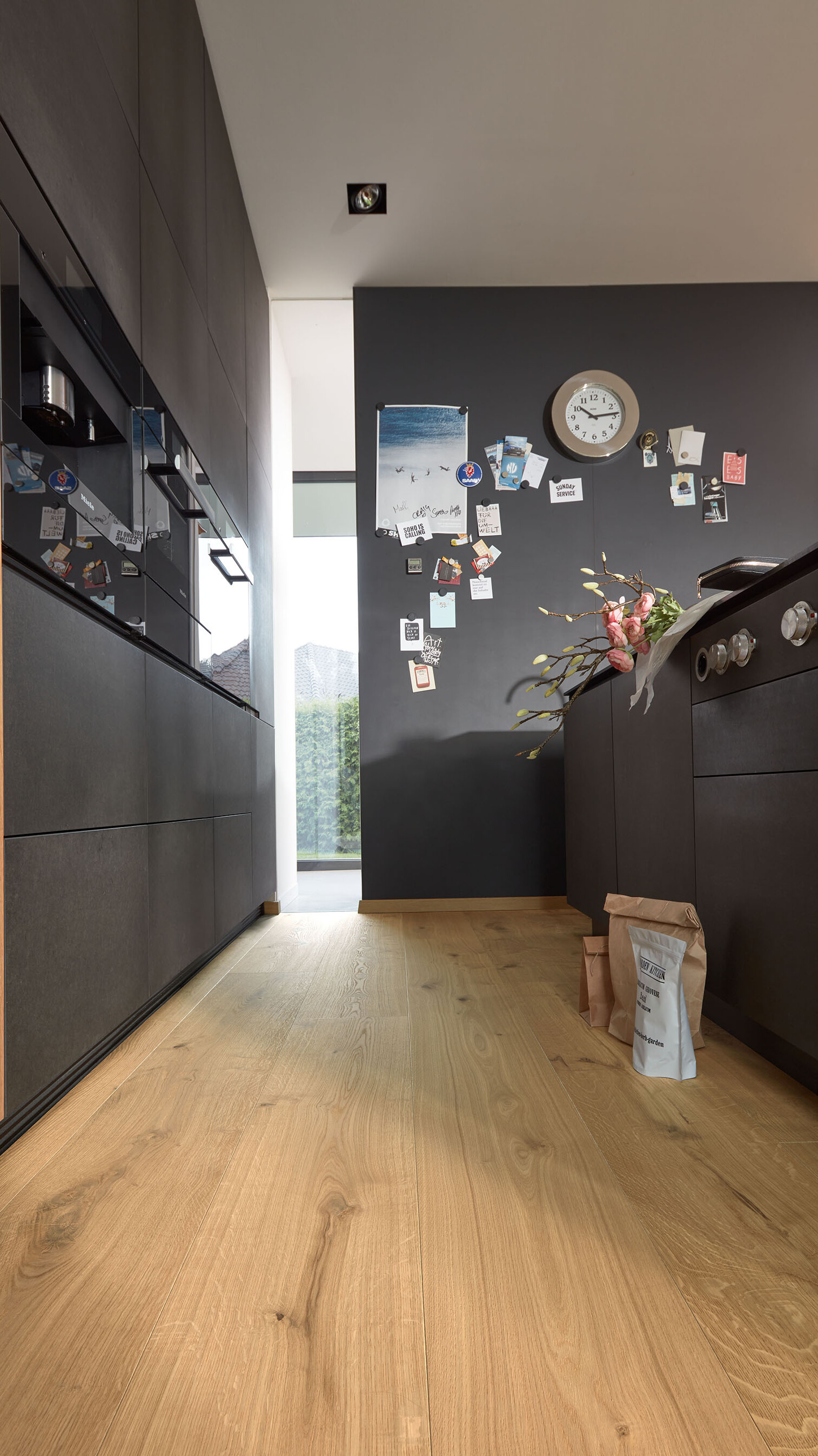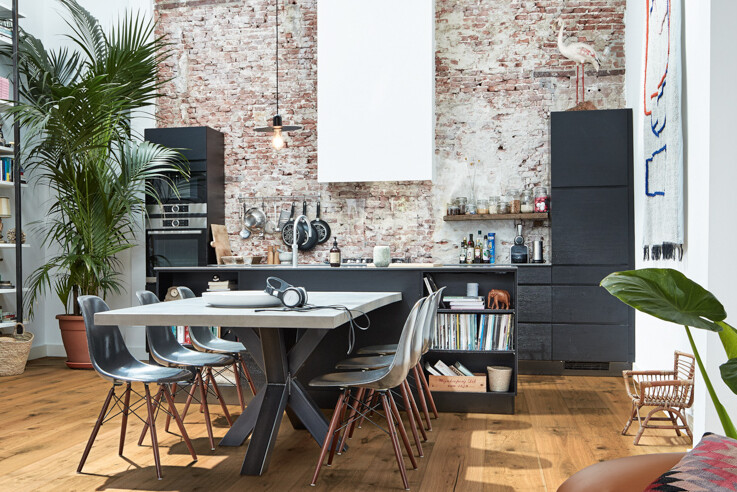



Black is generally considered an elegant choice not only for cars and clothes, but also for kitchens. But this trend has only really started to emerge since open-plan living concepts and indirect lighting systems have come into play to create the right conditions. After all, a dark kitchen can end up making the space look smaller than it really is. That said, there are a number of different techniques that can be used to prevent this – even if the space is not a large open-plan kitchen with an adjoining living room or dining room.
Strictly speaking, black is not actually a colour; it’s the absence of light and therefore the absence of all colours. A more detailed explanation can be found here.

For a kitchen with dark or even black units to develop its full effect, it all comes down to contrasts. It may look elegant when all of the electrical appliances like the oven, hob and extractor hood are also in black, but the most exciting visual impact can only really be achieved when contours are recognisable. One way to achieve this is through a sophisticated lighting concept. Cleverly positioned, indirect batten luminaires serve to emphasise corners and edges, in addition to creating a sense of space and interesting reflections. And when it comes to highlighting specific features, individual spots can work wonders. Energy-saving LEDs allow the light to shine for several hours without becoming too costly.
Even though light and colour accents can make a dark kitchen look more relaxed, black units are best used in generously proportioned rooms with plenty of natural light. The visually restrictive impact of dark furniture is often underestimated.



Black makes for an excellent counterpart to all colours. Whether it’s combined with rich red, yellow, green or delicate pastel shades, it never fails to provide a strong contrast. The same applies to many materials. They might be merely an inconspicuous detail on white or light units, but accessories like stainless steel handles, for example, transform into real eye-catchers in a dark kitchen. Wooden worktops can also look incredibly elegant in combination with black kitchen units. The way these colour accents and material highlights are created all comes down to personal taste. They might take the form of accessories such as lampshades, pleated blinds for the windows or even expressive murals. A well-stocked fruit bowl is another great way to add a burst of colour and is much more eye-catching against a black background than on a white kitchen counter or a bright dining table.
A particularly casual contrast to the modern black kitchen can be afforded by appliances such as toasters or food processors in a retro design. These often come in bright red or soft pastel shades that really catch the eye, provided they feature prominently within the kitchen rather than being stored in a cupboard.

If you go for dark units for your kitchen, you will have a huge palette to play with when it comes to your wall colours. White walls are a great way to brighten up the room, and this effect can be enhanced further still with a light floor covering such as the laminate flooring Cream stone 07138. If the worktops have a wood-effect finish or are made of marble, it is a good idea to incorporate this aspect into the floor and wall design and to match the colours. The MEISTER design flooring unempfindlich und eignet sich daher besonders gut für is highly resistant, making it ideal for use in the kitchen. Since it is available in a wide range of colours, you are sure to find a design that matches the tone of your wooden worktop. If marble is used in the kitchen, for example, the robust Lindura wood flooring from MEISTER can be used in the corresponding shade.
Strong colours can easily be applied to the walls as long as the flooring and worktops are kept light. They give the kitchen that extra touch of individual charm. It all comes down to personal taste.